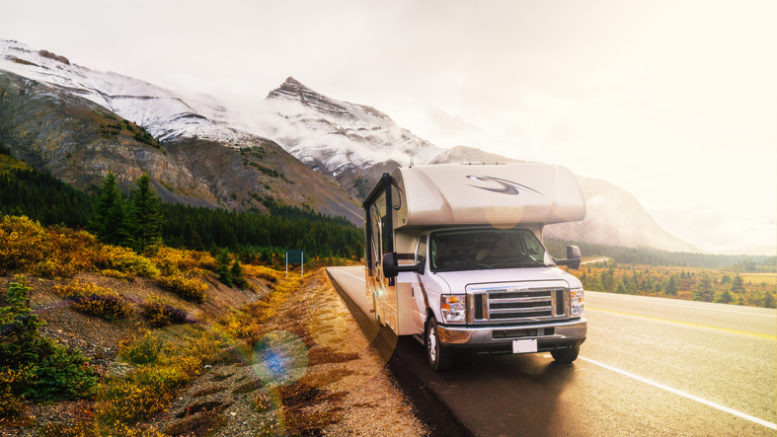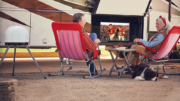Here are some important towing tips for increased safety and enjoyment in your RV travels. Know how to tow before you buy, and every time you head out on the road. You will have less hassles, more fun and will help promote RV safety. Here are ten towing tips to get you started.
Understand the basics
Start at the beginning. Read our tips on managing RV weight. Understand the weight definitions and the importance of weight distribution in towing. Do this before you buy.
Obtain and carefully read manufacturer’s manuals and product-specific fifth wheel travel towing tips. Make sure you understand their definitions of weight-related terminology. If you are planning to tow a trailer or fifth wheel, the major truck makers have Towing Guides that include model-specific details.
Develop a realistic estimate of fully loaded weight, and do the calculations to make sure you end up with an RV and tow vehicle combination that will meet your needs. Don’t forget any options or accessories you had added (or plan to add). Remember to consider passengers, belongings, full water and fuel tanks.
This is time well spent to avoid poor purchase decisions, costly repairs and unsafe travel.
Distribute the Load
Weight Distribution is critical. Know your Gross Axle Weight Ratings (GAWR), obtain measurements of specific wheel position loads and set tire pressure appropriately. Keep the center of gravity low. Keep cargo secured to prevent shifting that could cause a loss of control.
Distribute weight between right and left and front to back per the specifications for your particular RV and tow vehicle. Trailer towing requires the right amount of tongue weight.
Tap into the expertise of hitch and trailer specialists for towing tips on your particular configuration.
Determine if you need a weight distribution system (generally recommended for trailers over 5,000 lbs. fully loaded.)
Hitching Your Wagon:
Select hitches and tow bars that are rated to handle the load, in conjunction with the actual towing capacity of the towing vehicle. The maximum towing capacity is determined by the lowest-rated element in the chain of hitch components.
For trailer towing, this chain consists of the trailer rating, the ball hitch rating, the hitch rating, and the towing capacity of the vehicle. The weakest, or lowest-rated, element in this chain always determines the maximum safe towing capability of the entire chain.
For a motorhome towing a dinghy, the same principle applies. You must consider the towing capacity of the motorhome itself, as well as the ratings for a tow bar, cables, and connectors.
Hitch up and unhitch a few times to get the steps down. Use a towing tip checklist to make sure you don’t forget anything. Hook up and un-hook on smooth level surface.
When towing a dinghy, manufacturer towing tips often state that the receiver hitch of the motorhome should never be more than 4 inches higher than the baseplate attachment points — use an appropriately sized and rated drop receiver.
Most trailers and tow vehicles should be level (parallel to the ground) during travel. Check for manufacturer towing tips and instructions to correctly set up your combination of vehicles.
Built for Two
When you connect a towing and towed vehicle, you need to make sure that the two can operate together effectively, safely (and legally in some cases).
Brakes – Many states require a separate braking system on towed vehicles with a loaded weight of more than 1,000 – 1,500 pounds. Legal reasons aside, a separate functional brake system for towed vehicles is recommended for increased safety. Include a breakaway option, in the event the trailer or toad is separated from the towing vehicle.
Lights –The law also requires that the towed vehicle have operable lights. The brake lights, tail lights and turn signals of the towed vehicle must operate in sync with the towing vehicle.
Oh say, can you see?
Make sure you have adequate mirrors to give you the visibility you need for safe RV driving and towing. If your mirrors aren’t adequate, change them. If you are towing a trailer, you should have extended side-view mirrors to see rear and side-approaching traffic. Rear-vision cameras may be included in your motorhome, with a monitor in the driver’s cockpit. These provide a view of the dinghy and immediate roadway in back, and help when passing or changing lanes. They are available as an after market add-on, and there are rear-vision cameras that work with towable RV applications.
Ready, Set, Go?: Well, maybe not yet.
Another good towing tip – practice first. Before you head out on your first trip, practice driving, turning, stopping (and backing up for towable trailers) in an area away from heavy traffic. Make sure you know your roof clearance. Try out your mirrors.
Driving
When starting out, accelerate slowly and steadily. The addition of a trailer or dinghy adds weight and length. More weight means more time. Determine how long it takes you to accelerate and come to a stop. Allow extra time for changing lanes, stopping and passing other vehicles. Pass on level ground with plenty of clearance. Avoid sudden moves. When turning, allow room for the towed vehicle to clear.
Get in the habit of looking ahead
A good rule of thumb is to look as far ahead as you will travel in 12 – 15 seconds. Obviously, this distance will vary depending on how fast you are going. Give adequate notice of your intentions with turn signals. If you are going to come to a stop, a few taps on the brakes might give a clue to the driver behind
you. Watch traffic signals and anticipate light changes so you can stop in time.
Backing
For motorhomes, don’t try to back up with a dinghy attached. The key towing tip here is to avoid getting into a spot where you have to back up in the first place. Or disconnect the dinghy before backing.
For towable trailers, back up slowly, with someone spotting near the rear of trailer to guide you. It’s a good idea to agree on a set of hand signals beforehand, so you can communicate clearly with the spotter. Move the steering wheel in the direction you want the trailer to go. Make small steering movements so you can get the hang of it. Slight steering movements result in much greater movement in the rear of the trailer.
Swaying in the Breeze:
Hopefully not. Appropriate attention to weight limits and distribution in setting up your tow configuration will help avoid problems with sway. Sway control options are available to help with trailer sway, and a weight distributing hitch system is recommended for large towable trailers.
If you do experience trailer sway from a gust of wind, downgrade or draft from a passing truck: remember to gradually reduce speed, steady the steering wheel and only apply the trailer brakes. Do not slam on the brakes since jackknifing could occur. Do not try to steer out of a sway, increase speed or make sudden moves – it will only make things worse. Absolutley do not tow a trailer that continues to sway – determine what is wrong and correct the problem.
No passengers: You should never have passengers traveling in a towed trailer or dinghy.
An Ounce of Prevention: Avoid serious problems by adopting a “checking it twice” mindset. Use towing tip checklists as handy reminders. Before long trips, make sure your maintenance is current on both the towing and towed vehicle. Follow manufacturer’s instructions for maintenance on your towing apparatus.
The first time you tow, a general towing tip is to stop after 50 miles to check towing connections, tires, etc. Make regular stops to stay fresh at the wheel and during these breaks, check around the RV and tow to make sure all is well. General advice is a stop every two hours.
Now don’t forget to check out the weight definitions and resources for towing tips.
Bonus tip: the best entertainment for your RV
Sure, RV life is about getting away from it all. But does that mean being disconnected? Absolutely not. You’ll want to trick your RV out with the best TV, cellular, and internet products. But how can you know what’s right for you? Luckily, it’s as easy as making a phone call. Call the experts at Signal Connect at 888-233-7563. We can help you choose an entertainment solution that makes sense. You’ll be glad you did. Call 888-233-7563 during East Coast business hours, or, if it’s after hours, fill out the form below.





